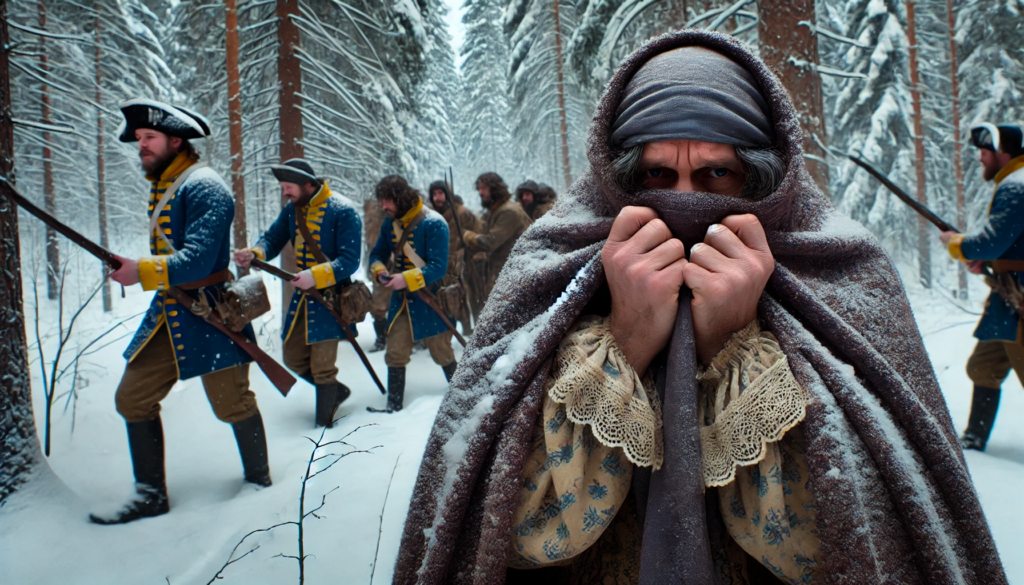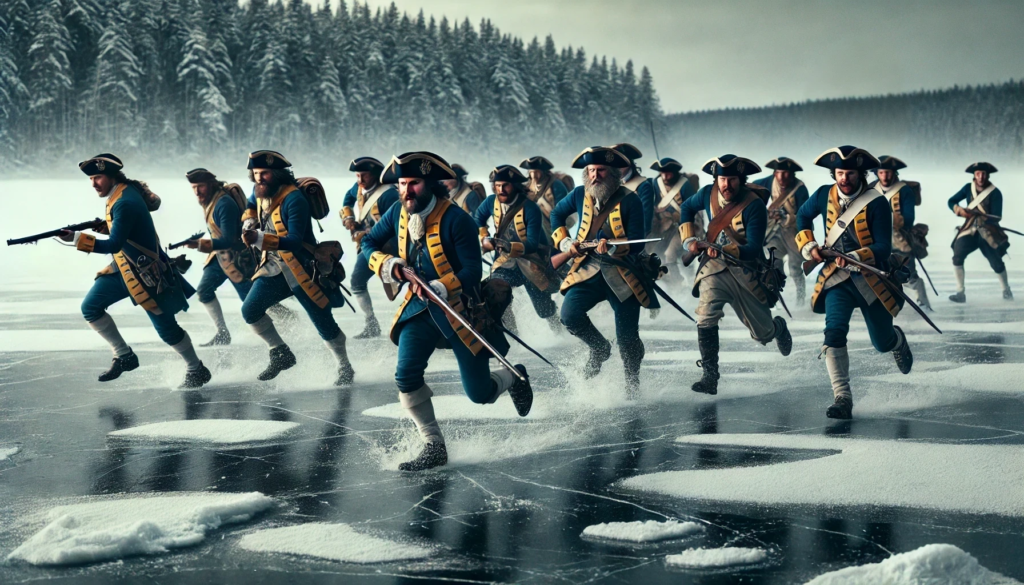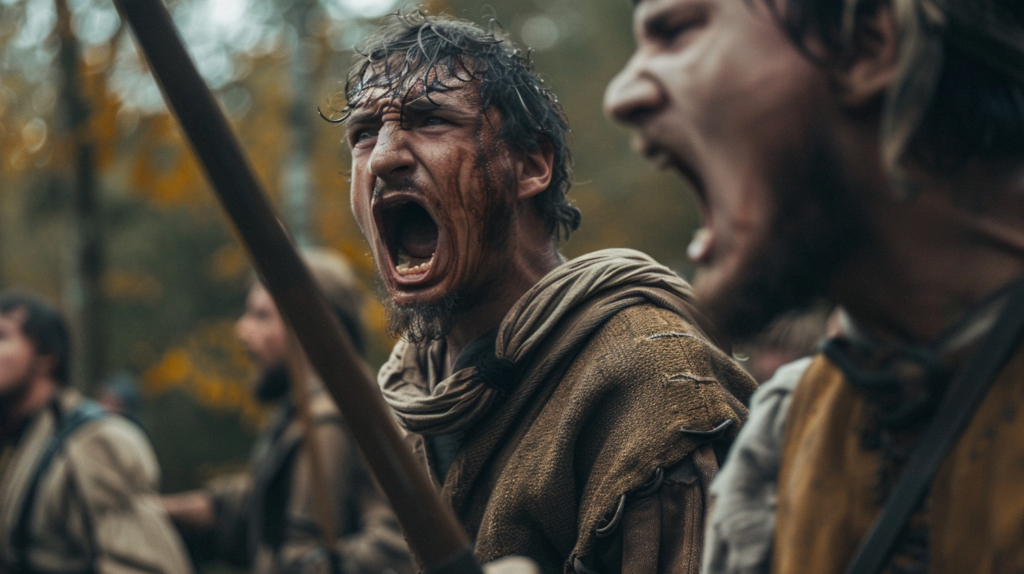Unlike Nils Dacke in the 1540s, there was no ONE leader for the Snapphanar in the 17th century. One reason being, as previously mentioned, that there was no ONE Snapphane-movement. There was independent peasant uprisings, common robbers and then the free-shooting companies that were at least partially supported by Danish authorities.
Svend Poulsen, the Captain of Göinge is one of few that is known today. It is probably because he was a leader of one of the free-shooting companies and thus in the service of the Danish crown, so there are official records of him. But there is also many legends about him, but how much is true is up for speculation.

Despite the cold, Svend felt trickles of sweat down his back. He drew the shawl closer around him, careful to hid as much of his face as he could. He was surrounded by enemies and if they recognized him, he would be dead in seconds – or worse, captured.
He marveled at how much noise the Swedish soldiers made when moving through the woods. He and his men could move like shadows, surround their prey without them even noticing. After many of these surprise attacks in the forrest, the Swedes had become wary. But not of an old woman, willing to betray the Danish rebels.
At least, that was what the arrogant Swedes now surrouding him thought. That he – Svend Poulsen – was an old crone, that would lead them to the Captain of Göinge. To himself.
Finally, the frozen lake came into view. Ever so slightly, Svend quickened his pace so that he reached the lake shore first. Then he turned to his pursuers, straightened his back and threw away his shawl.
– Here stands Svend Poulsen! he yelled. Catch me if you can!

And he turned and sprinted for his life, right out on the frozen lake. He could hear the ice moan under him, knowing it was thin and treacherous. After a few moments of stunned silence, the Swedish troops gave a roar of anger and excitement, and stormed after him. On to the thin ice.
By the time Svend reached the other side of the lake, he heard a large crack as the ice gave way beneath the feet of the heavily armoured soldiers. He turned and watched them sink helplessly into the icy water. As they drowned, the legend of Svend Poulsen, the Captain of Göinge, was born.
Svend Poulsen was born around 1610 in either Halland or Skåne. He fought in the Thirty Years War, and later became a captain of a Danish free-shooting company during the Swedish-Danish wars and became known as the Captain of Göinge (”Göingehövdingen”).
The story above is from one of his most famous adventures as a leader a band of Snapphanar in the forrests of Halland. After the Danish defeat, he was awarded a yearly pension by the Danish king for his efforts.

Another famous Snaphane leader was called Lille Mads (”Little Mads”). He is said to have plundered Hovdala Castle in Skåne in 1678, as well as been a commander in one of the last larger battles between Snapphanar and Swedish troops a year later. The Swedes won the battle and Lille Mads tried to flee, but his horse was shot and he was caught. Though he fought even after being so badly wounded he couldn’t stand, he was eventually killed.
His comrades found his body and buried it, but his grave was located by a Swedish shapphane-hunter and his remaines were dug up and put to the wheel as a warning to others.
There was even a high-born lady named Karin Lycke that was accused of being a Snapphane. She owned a manor in Skåne and was suspected of being a leader of the looting of Herrevad’s monastery in 1658. Swedish soldiers searched her house, but found no evidence, and since she was noble they didn’t dare charge her with anything. No one knows if she was actually involved, but many of the looters lived on her lands.
I would like to add that I’m aware that the Carolingian uniforms aren’t historically correct in the pictures above. However there is only so much AI can do – or at least, there is only so much I can do with AI yet. Hoping for your understanding considering this!
Sources:
Adolfsson, Mats. Fogdemakt och bondevrede. Svenska uppror: 1500 – 1718. (2007)
Hazelius, Kim. De kallades Snapphanar. Friskyttar, rövare & bondeuppbåd. (2006)

